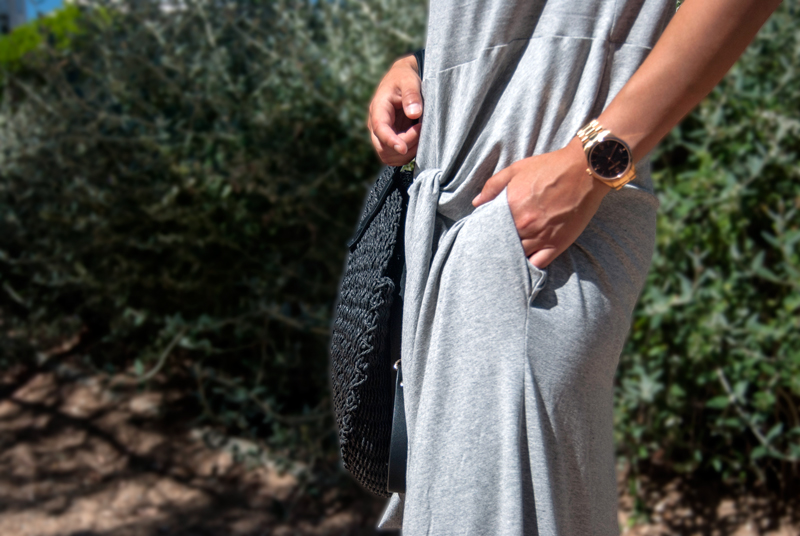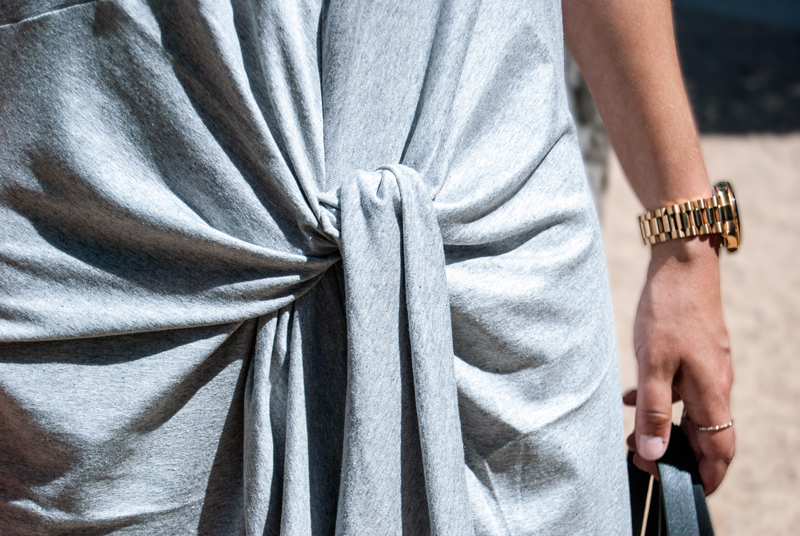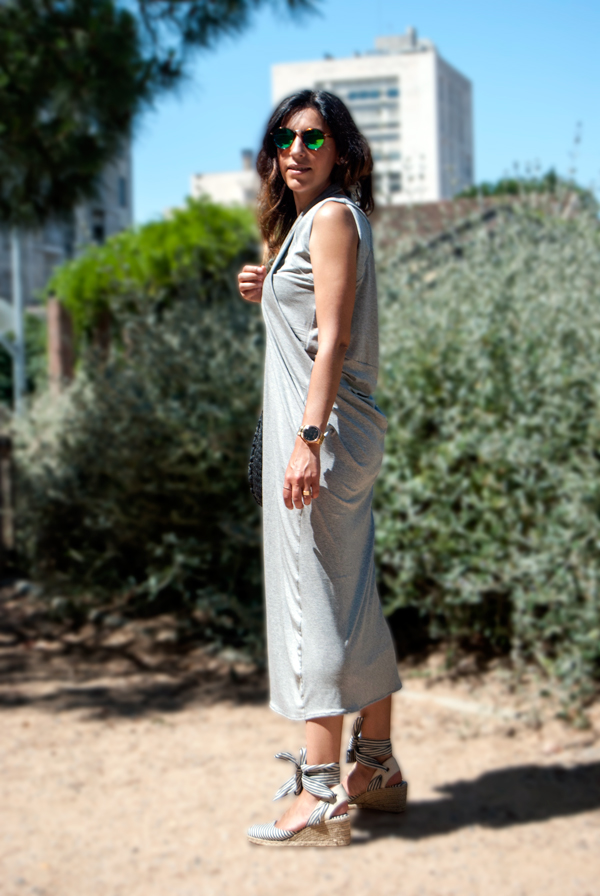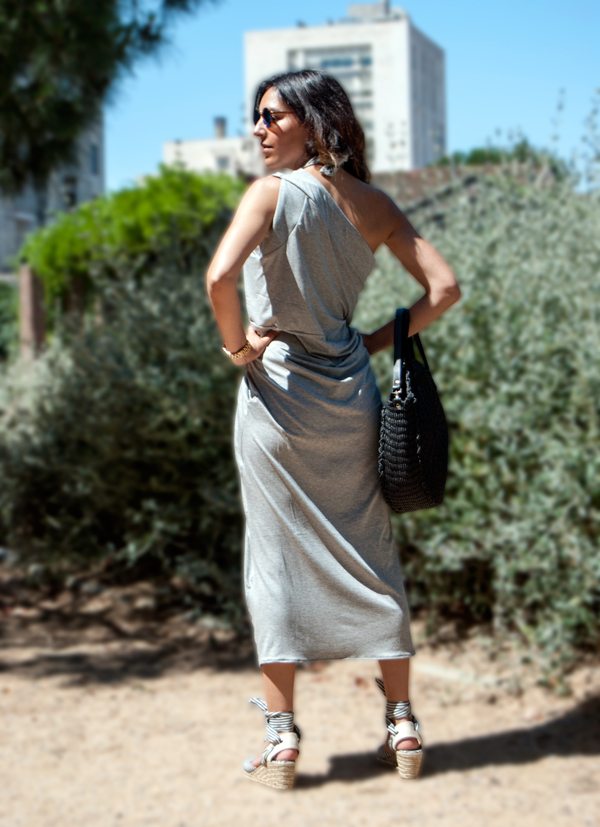Buenos días
En el post de hoy trata de dos temas: la deconstrucción y el dos en uno en una prenda.
Si buscamos en el diccionario la definición de deconstrucción nos dice lo siguiente: Desmontaje de un concepto o de una construcción intelectual por medio de su análisis, mostrando así contradicciones y ambigüedades.
La deconstrucción existe desde los años 80. Un diseñador que estaba y está jugando mucho con la deconstrucción es Martin Margiela. En el caso de España, otra diseñadora cuyas colecciones están llenas de esta técnica es Txell Miras. Los dos están entre mis diseñadores preferidos.
Tengo que reconocer que unos de las cosas que más me han gustado y me han divertido, incluso más que el estilismo, es el patronaje. Recuerdo que al principio se me hacía muy pesado, pues no sabía mucho del tema y me sentía como muy limitada, pero cuando empecé a tener unas nociones y descubrí todo lo que podía hacer se me abrieron los ojos. En ese momento y hasta día de hoy creo que esto es lo que ha hecho que me guste aún más la ropa. Recuerdo como disfruté cuando me enseñaron a experimentar con los patrones. Descubrí un nuevo mundo. Lo que se puede hacer con una simple pinza, como puedes “engañar” para hacer un montaje totalmente diferente a lo clásico.
De hecho, tanto mi proyecto final del módulo como el de la carrera se basaban principalmente en la deconstrucción.
Hoy os traigo un vestido muy especial, donde he disfrutado mucho en su creación. No quería hacer un patrón muy complicado, pero sí que quería que fuera diferente a las otras prendas que han ido saliendo en los post anteriores. Como veréis tiene dos opciones a la hora de ponérnoslo, esto es gracias al lazo que hay en la parte central del vestido. Al ser un vestido de punto el patrón no tiene pinzas así que la tuve que crear. ¿Cómo se hace esto? Tan simple como hacer un corte en la parte donde nos interesa tener más tejido y lo abrimos 😉
Gracias a este lazo lo podemos utilizar como vestido recto con una lazada decorativa o si lo preferimos nos lo podemos poner como si fueran tirantes y lo enlazamos en el cuello. Esto provoca un movimiento totalmente diferente en el tejido, de liso pasa a fruncido.
Tened en cuenta que de este patrón podrían salir mil vestidos diferentes. Por ejemplo si el lazo fuera más largo aún se podría jugar más con la manera de ponernos el vestido.
Buff vaya rollo que os he metido hoy, todo esto es pare decir que os animéis a experimentar, no sólo en el tema de patronaje si no en todo. Así es como se disfruta, se descubre y se aprende en todo 😉
¿Qué os parece el vestido de hoy? ¿Os gusta que una prenda tenga varias opiones?
Gracias por pasaros por aquí
Besos
Good morning,
Today’s post deals with two topics: Deconstruction and two in one in a garment.
If we look in a dictionary the definition of Deconstruction, we will find the following:
The act of breaking something down into its separate parts in order to understand its meaning, especially when this is different from how it was previously understood.
Deconstruction has existed since the 80´s. A designer who is still playing with deconstruction since then, is Martin Margiela. In Spain, another designer whose collections are plenty of this technique, is Txell Miras. Both are some of my favorite designers.
I have to admit that one of the things where I have enjoyed the most, beyond fashion outfits, is pattern designing. I remember when I started, it was quite hard for me. I didn’t know too much about that, and I felt so limited. But when I started to be more skilled and I discovered all what I was able to do, my eyes where opened. Since then, I think that this is one of the reasons which makes me love clothes even more. I remember how I enjoyed when I learnt to play with patterns. I discovered a new world. Everything you can do just with a clothespin, and how can you fake to do something completely different to the classics.
In fact, my final grade project was dealing about deconstruction.
Today I bring you a very special dress, I really have enjoyed during its creation. I wanted to keep the pattern simple, but different to the other garment shown in previous posts. As you can see, there are two options to wear it thanks to tie placed in the middle of the dress.
Since it is a cotton knit dress, the pattern doesn’t have any clothespin, so I had to create it. How you can do that? It’s simple: just making a cut where we want to have more fabric, then you open it 😉
Thanks to the tie, we can wear the dress as a straight dress with a decorative bowknot, or you can tie it in your neck instead. Then the fabric turns from smooth to gathered.
Bear in mind that from this pattern, you can get one thousand different designs. For example, if the tie were longer, you could find even more ways to wear the dress.
Well, what a lecture I’ve given you, no? This is for encourage you to try out, not only in pattern making, but in everything. That’s a good way to enjoy, discover and learn J
What do you think about today’s dress? Do you like garments with several options to wear?
Thanks for visiting me.
Kisses












PATTERNS: DECONSTRUCTION AND TWO IN ONE
BAG: ZARA
SANDALS: ZARA
SUNGLASSES: MELLER
Es una pasada el vestido!! Me encanta!!!!
Besos
https://www.donkeycool.es/
Muchas gracias guapa.
Besos!
Estoy totalmente de acuerdo contigo en que hay que experimentar. Y me encanta tu vestido!! La forma desestructurada me vuelve loca. Un besazo!
Steal4Style.com
Muchas gracias, me alegro que te guste tanto.
Un beso!